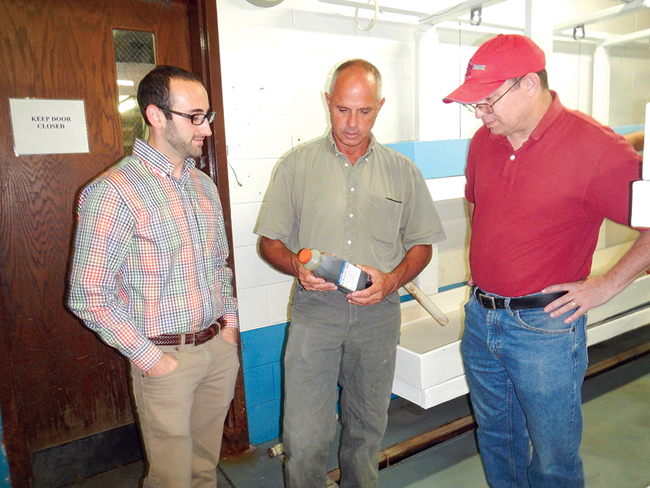March 16, 2019 – Shellfish Farming on Long Island- From eggs to littlenecks- how clams are grown for food and restocking Long Island waters.
Gregg Rivara, Cornell Cooperative Extension. See how hard clams (AKA littlenecks, cherrystones and chowders) are grown in a hatchery. We will have baby clams, their parents and the food they eat. Meet with scientific from Long Island and take a look at the tiny clams under a microscope and learn more about how the hard clam was once the largest fishery on Long Island.
Want to learn more about Gregg: http://ccesuffolk.org/marine/aquaculture

Photo Credit: Barbara Branca
Where did you go to school?
Beach Channel HS in NYC had a marine science program; BS at Southampton College, Long Island University; MS at Marine Sciences Research Center, SUNY-Stony Brook (now SOMAS at SBU).
What is your area of research?
Shellfish Aquaculture- both private and public
Who or what inspired you to become involved in marine science?
My father was a dock builder so I spent a lot of time on the water; I had a boat and explored at an early age.
What qualities do you think are important in order to become a scientist?
Being inquisitive, open-minded and being able to work with others to get a job done.
Why is your research topic important?
Shellfish farming is good for the environment- removes nitrogen and creates habitat, jobs and healthy, clean food.
What will you be bringing with you to the “meet with an Oceanographer” day?
Baby clams, the food they eat and microscopes to view them.
What is the best advice you have for people interested in becoming involved in your field of research or in marine sciences?
Besides school, get involved with a researcher or group (volunteer) to get real-world experience in high school and/or college- some of these internships turn into full-time jobs.
What is your favorite ocean organism?
The hard clam, Mercenaria mercenaria